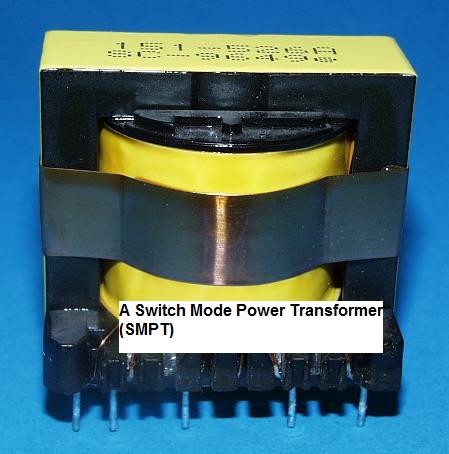Direct AC Charging
At the beginning I assumed that any electric vehicle would use a switching power supply as its charger. This is not necessarily the case. It's an interesting coincidence that the EV1's battery pack voltage, 312 volts, is not much below that produced by direct rectification of the 240 VAC power line (340 volts). Given that the EV1's inverter (the electronic circuit that converts DC into AC for the induction motor) looks very much like a DC switching power supply in reverse, it's possible to feed 240V AC line current directly back into the inverter. This would use the inverter as if it were doing regenerative braking -- with the AC power line taking the place of the motor/generator. This approach, called reductive charging by Alan Cocconi (one of the original EV1 designers) has the advantage of requiring neither an offboard charger like the Magnecharger or the nearly equivalent onboard charger. The inverter would double as the charger, and with its existing liquid cooling system it could probably handle some fairly high charging power levels -- at least as high as those encountered in highway cruising.
This approach would dictate a conductive interface.
For safety's sake, this approach would require the complete isolation of the propulsion battery and all related circuitry from the chassis of the car. Both the negative and positive lines from the propulsion battery would be "hot" with AC with respect to ground while charging. The EV1 is already designed this way. But Cocconi reports that even with this isolation, small leakage currents can exist that will trip a GFCI in the supply circuit and careful design of the drive motor is required to eliminate them.
As an alternative, a stationary AC isolation transformer could be provided on the outlet used for charging. But because this would have to be a 60 Hz transformer rated for full charging power, it would be physically large and heavy. It could easily be heavier and possibly even more expensive than the existing Magnecharger.
The existing switch-mode chargers, for all their faults, do provide AC ground isolation "for free" through their high-frequency transformers -- either the one built into the car (conductive approach) or the one formed by the paddle and coupler in the inductive approach. And they do adapt readily to changes in AC line voltages. Both problems would have to be solved in any direct AC charging scheme.
Discussion
The reductive charging scheme seems attractive because it requires no special charging hardware, either on the car or at the charging site. But it turns out that the charger is only a fraction of the cost of many charging sites. Simply bringing power to the parking spot turns out to be much more costly in most cases. Even 120V convenience outlets, sufficient only for very slow EV charging, are rare in parking lots. Higher power feeds have to be installed specifically for EV charging. This often requires trenching under asphalt in a parking lot or running hundreds of feet of conduit in a parking garage. Sometimes the runs are long enough to require a 480V feed and a step-down transformer near the charger, further increasing the cost.





